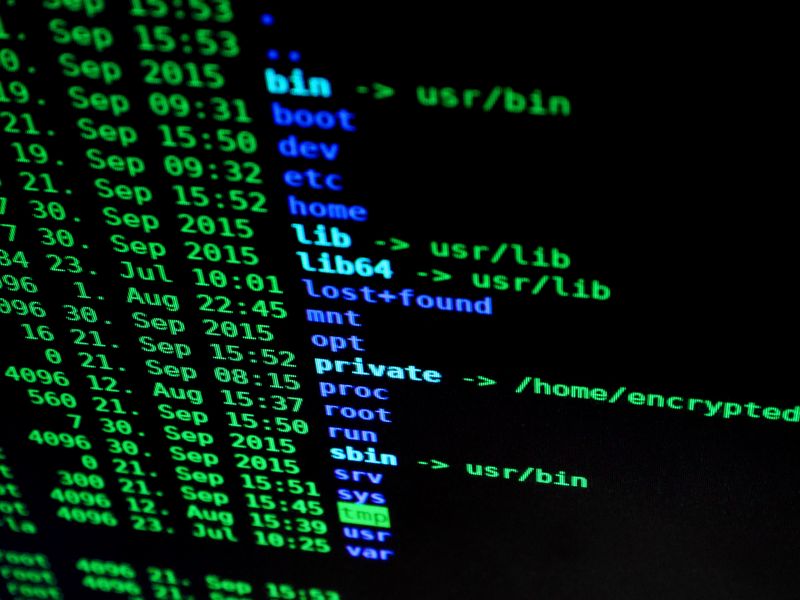Vulnerabilities Inside the Mind of the Hacker: Report Shows Speed and Efficiency of Hackers in Adopting New Technologies
Democratization of Hacking through Artificial Intelligence
The annual Bugcrowd report, titled “Inside the Mind of a Hacker 2023,” sheds light on the evolving landscape of hacking and the role of artificial intelligence (AI) in the field. The report explores the attitudes and methods of hackers using Bugcrowd’s pool of bug hunters, focusing specifically on the use of AI by hackers to enhance their activities. While hackers acknowledge that AI cannot replicate their human creativity, they are already using AI tools in their workflow.
According to the report, 64% of Bugcrowd hackers are using AI in their hacking process, and an additional 30% plan to incorporate AI in the future. The top use cases for AI among hackers include automating tasks, analyzing data, identifying vulnerabilities, validating findings, conducting reconnaissance, categorizing threats, detecting anomalies, prioritizing risks, and training models.
The Synergy of Human Creativity and AI Workflow Support
Hackers see AI as a tool that augments their abilities and provides them with a competitive edge, rather than a threat that replaces their expertise. The combination of human creativity and AI workflow support is changing the face of hacking. Ethical hackers can leverage AI to find vulnerabilities more efficiently and improve their reporting. However, this symbiotic relationship between hackers and AI is a cause for concern when it falls into the hands of malicious actors.
The Role of ChatGPT and Prompt Engineering
The primary AI tool used by hackers is ChatGPT, a language model that hackers are using for report generation and language translation. Malicious hackers are also exploiting the capabilities of ChatGPT to produce compelling phishing campaigns. However, hackers are not limited to using ChatGPT within its designated purpose. They are employing prompt engineering techniques to bypass ChatGPT’s filters and persuade it to perform tasks it shouldn’t.
Prompt engineering can be seen as a form of social engineering, where hackers persuade AI to carry out actions that go against its intended use. The ability to manipulate AI models poses a significant challenge in terms of securing AI technology and preventing its misuse.
Comparing AI to Historical Tool Developments
Bugcrowd’s founder and CTO, Casey Ellis, draws parallels between the adoption of AI in hacking and the past adoption of other tools such as Metasploit. Hackers have always made use of available tools, and AI is no different. While previous tooling developments may have been complex and difficult for non-technologists to understand, AI, particularly ChatGPT, is widely accessible and easy to use. This accessibility may lead to an increase in the number of hackers, especially among younger generations who have grown up using technology.
Concerningly, the report reveals that the number of hackers aged 18 or younger has doubled in the past year on the Bugcrowd platform. These young hackers have a unique perspective on technology, focusing more on exploiting design flaws rather than understanding the underlying technology. AI, with its ability to explore business logic, poses a new challenge as it can easily identify vulnerabilities in systems and applications.
The Democratization and Potential Threats of AI in Hacking
The democratization of AI brings both opportunities and risks. While hackers, especially those with ethical intentions, can leverage AI to enhance their abilities, the same technology falls into the hands of malicious actors who can exploit it for nefarious purposes. AI introduces speed, scale, and efficiency to hacking, leveling the playing field and making hacking more accessible to anyone, regardless of technical expertise.
Currently, hackers are limited by the capabilities of ChatGPT. However, the report warns of a potential future where an AI model, trained by an adversarial nation-state on the source code of target applications, could pose a significant hacking threat. Such a scenario would involve an AI model learning from the expertise of elite nation-state hackers, bypassing the limitations of current AI tools.
Editorial
The Bugcrowd report highlights the transformative potential of AI in the world of hacking. AI provides hackers with automation capabilities, enhanced data analysis, and improved vulnerability identification. However, this technological advancement brings with it ethical concerns and the potential for misuse.
It is crucial for policymakers, security experts, and the tech industry to prioritize the development of robust security measures to protect against the increasing sophistication of AI-driven hacking techniques. Regulation may be necessary to ensure responsible use of AI in the hacking ecosystem. Additionally, organizations must invest in advanced threat detection and mitigation systems to stay one step ahead of hackers leveraging AI.
It is also essential to address the evolving nature of hacking and the younger generation’s involvement in this space. Educating young individuals about responsible and ethical hacking can help guide their talents to benefit society rather than exploit vulnerabilities.
Ultimately, the advancement of AI in hacking underscores the need for a comprehensive and multi-faceted approach to cybersecurity. Only through a combination of strong technical defenses, regulatory frameworks, and ethical hacking practices can we navigate the complex digital landscape and safeguard our digital infrastructure.
Advice
To mitigate the risks posed by AI in hacking, individuals and organizations should take the following steps:
1. Stay Informed: Stay up to date with the latest advancements and trends in AI and hacking. Being aware of emerging threats and techniques can better prepare individuals and organizations to defend against them.
2. Implement Strong Security Measures: Implement robust security measures, including strong access controls, regular patching, encryption, and multi-factor authentication. These measures can help protect against vulnerabilities that hackers may exploit.
3. Invest in Threat Detection and Response: Deploy advanced threat detection and response systems that can identify anomalous activities and provide real-time alerts. Rapid response to potential threats can significantly reduce the impact of a cyberattack.
4. Security Awareness Training: Provide security awareness training to employees and individuals to educate them about the potential risks and best practices for protecting against hacking attempts. This training should emphasize the responsible and ethical use of technology.
5. Collaborate with Ethical Hackers: Engage with ethical hackers and bug bounty programs to identify and fix vulnerabilities in systems and applications proactively. Building a collaborative relationship with hackers can help organizations stay ahead of potential threats.
6. Support AI Regulation: Advocate for responsible AI regulation and support efforts to create regulatory frameworks that address the unique challenges posed by AI in hacking. Engage with policymakers to ensure that ethical considerations are at the forefront of AI development.
By taking these proactive steps, individuals, organizations, and policymakers can navigate the evolving landscape of AI in hacking while minimizing the risks and maximizing the benefits offered by this transformative technology.

<< photo by Paul Frenzel >>
The image is for illustrative purposes only and does not depict the actual situation.
You might want to read !
- Exploring the Vulnerabilities in Technicolor Routers: Hardcoded Accounts Enable Complete Takeover
- Chinese Hackers Breach US Government Agencies, Exposing Sensitive Email Data
- Chinese Cyberspies: Unmasking the Stealthy Hackers Targeting Government Emails
- “Critical Calls for the White House: Swift Nomination of National Cyber Director Needed”
- Exploring the Vulnerability: How Hackers Exploit Policy Loopholes in Windows Kernel Drivers
- The “Pig Butchering” Crypto Scam: Unraveling the Massive Wealth Transfer to Southeast Asia
- Google Pledges $20 Million to Establish Cybersecurity Clinics for a Safer Digital Landscape
- Identity Giants IDEMIA and Ping: CISO Conversations and Insights
- The Escalation of Ransomware Extortion: A Deep Dive into the Soaring $449.1 Million Crisis
- Citrix Strengthens Security Measures with Critical Vulnerability Patch for Ubuntu
- Exploring the Ransomware Epidemic: A Fresh Perspective on Cyber Threats
- Bangladesh’s Data Security Crisis: Personal Information Exposed on Government Website
- MOVEit Transfer Struggles with Yet Another Major Data Security Flaw
- Breaking Encryption: The Illusion of Balancing Privacy and Security
- The Unending Struggle: Cyberattacks, Defense, and the Battle to Protect Our Digital World
- Unleashing the Power of Zero Trust: Securing Real-World Defense Against Digital Attacks
- The Urgent Need for Action: Addressing the PoC Exploit for the Ubiquiti EdgeRouter Vulnerability




